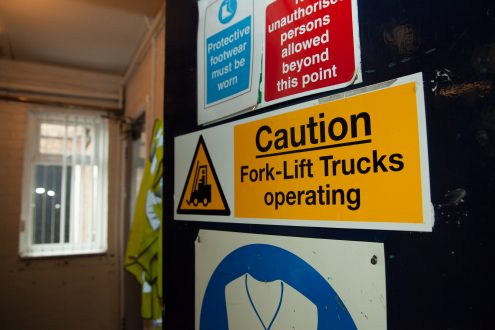Identifying Health & Safety Hazards in the Workplace
While the topic of health and safety can generate a bad press, this is usually down to lack of understanding of the rules and the consequences of ignoring them.
In the UK, the Health and Safety Executive (HSE) oversees a range of laws intended to keep people safe in work environments. It can and does issue penalties for breaches and can bring criminal prosecutions resulting in fines or even prison sentences. It should also be noted that health and safety breaches can have a number of related consequences such as loss of productivity, compensation claims, and reputational damage.
Fortunately a combination of risk assessment and appropriate training, with a little common sense, can go a long way towards mitigating these risks.
Start With a Risk Assessment…
You need to know what specific risks there are, where they are and who is at risk to be able to deal with them. The HSE warns not to overcomplicate the process and breaks it down into 5 easy to follow steps:
- Identify the hazards
- Decide who might be harmed and how
- Evaluate the risks and decide on precaution
- Record your findings and implement them
- Review your assessment and update if necessary
Your duty of care extends throughout the whole of your company property, so if for example you have a car park as well as an indoor facility, then this also needs to be assessed and made safe. In the event of an accident, proof that you undertook an appropriate risk assessment may help significantly in dealing with the consequences.
One of the most important requirements of carrying out a risk assessment is that the appointed person, or company, has the required skill to undertake the job properly.
As a business owner you can outsource the job of carrying out a risk assessment to a specialist company, and although this is a great option for larger companies, it’s less feasible for smaller companies.
There are risk assessment training programmes available to help you learn how to recognise risk and carry out a sufficient risk assessment, whether you choose to do this yourself, or appoint a responsible person within your organisation.
Any risk assessment needs to be tailored to the individual business, but there are some hazards common to all environments:
Falling
This is a standard hazard, although its precise causes are likely to depend on the specific environment. In a kitchen, it may be caused by spills and in an office by loose cables. Bad lighting can cause people to misjudge their step in any environment and on construction sites the chances of falling from a height can be fatal if not properly assessed.
Hits and Knocks
In any environment, care should be taken to create a workspace where people can move freely without bumping into either each other or obstacles. In environments where items are continually being moved, meaning that they are more likely to be dropped, it may be appropriate for employees to wear safety clothing such as protective hats and boots. In all environments, items must be stored in an appropriate manner so that they do not fall out or cause free-standing storage units to overturn.
Burns and Scalds
Where handling hot items is integral to the nature of an employee’s work, appropriate training should be provided. Where it is incidental, companies should take steps to minimise the exposure to heat and provide extra guidance if required. A typical example of this would be in kitchen facilities. Kettles and urns should be cool to the touch and it may be appropriate to remind employees to respect the maximum capacity.
Fire
Fire is one of the most serious hazards in any environment, and can easily result in death if not properly assessed and protected against. Companies should also be aware that in addition to the damage fire can cause, if water needs to be used to put it out, this in itself can actually cause significant extra damage. Essentially it creates a situation equivalent to being flooded. While naked flames are an obvious fire risk, any source of heat can cause a fire. Faulty electrical equipment is another common fire risk. In addition to managing sources of heat, companies also need to manage sources of fuel. For example offices which store a lot of paper need to look carefully at how they store it.
Safety Education and Training
The best way to ensure the safety of the people present on your premises is to provide appropriate health and safety training for your staff, whether that’s job specific training, risk assessment training or fire awareness training, the more educated your staff are the easier it will be to avoid hazards and mitigate the consequences should an accident occur.
Firm in Northumberland Fined After Worker Severely Damages Right Hand What is a Vehicle Banksman?





